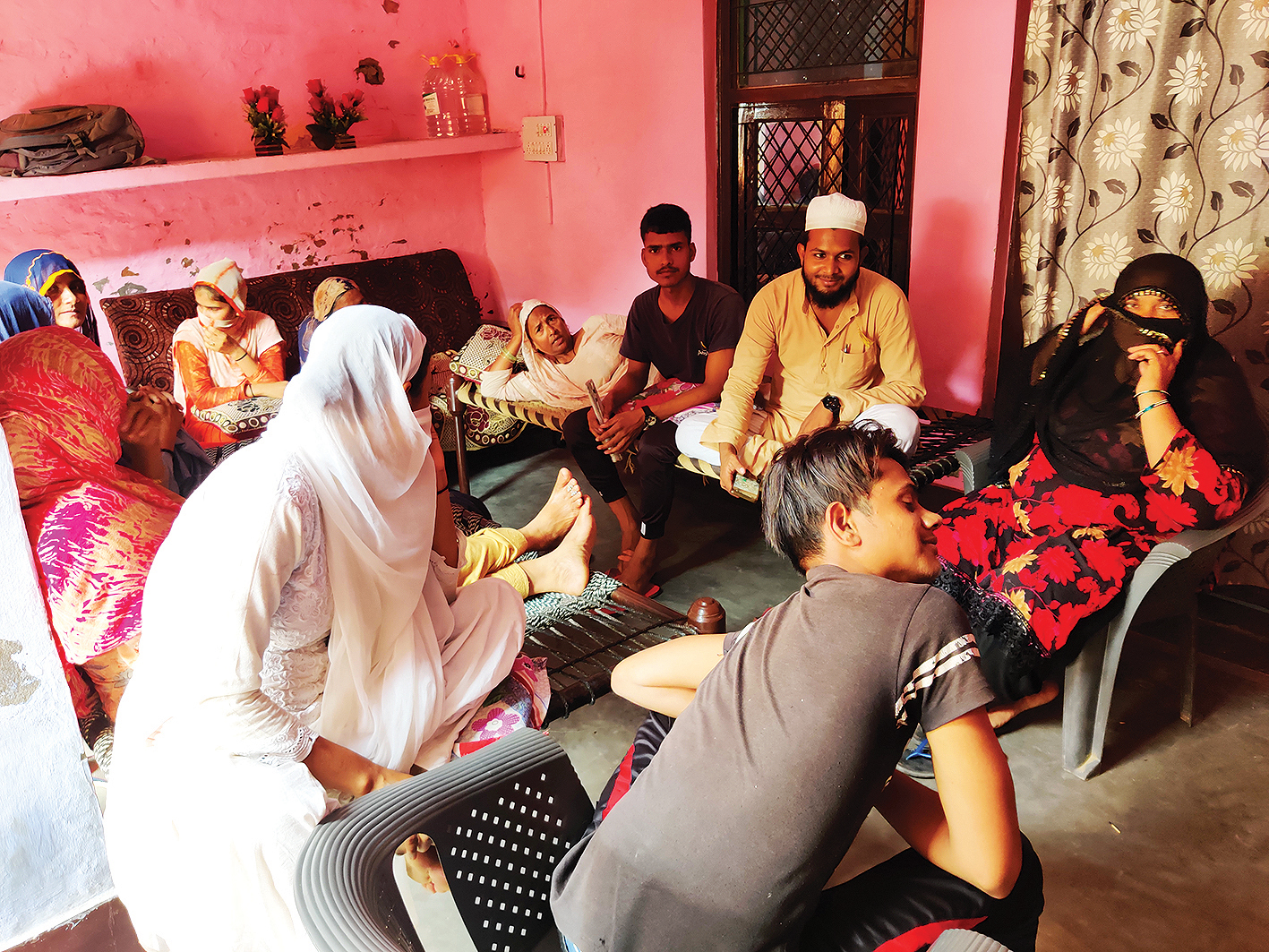Spending time with a UP family, this reporter discovered feudal ideas about girls’ education, perceived burden and marriage as an exercise in offloading a liability
“She doesn’t need a husband, she must earn Rs 40,000-50,000,” said Naushad, the father of Ruksaar — a 21-year-old who had filed a case against her husband under the Muslim Women (Protection of rights on marriage) Act of 2019.
These words were uttered pointing towards me, in response to the ladies who were very keen to know about my life. I was in Suhana village of Niwari, Uttar Pradesh, to meet Ruksaar and her family. But while she was in court, our conversation about Ruksaar’s failed marriage and abuse was soon exhausted in the three hours spent waiting.
The family sitting around were mostly women and they were very keen to know about this city dweller who had come alone, with no visible signs of being married.
It started off with whispers till the eldest of the women in the group couldn’t contain herself any longer — “So are you married?”. Before I could respond, the other ladies answered for me — “Of course she must be” while a couple of others replied in a softer voice “No, no she isn’t”.
“Well, I am not”, I said. The whispers again, although inaudible, must have asked: “Why? What could be holding her back? How is it possible?” Naushad’s interception quietened the women for a few seconds. “These educated people are not like us. They go out and work, earn their own money. Why would she need a man?” he added.
This was interesting, I thought. Here was a man who was citing my example to state that women were married off only so that they could find the means to sustain themselves through a man/ husband. Educated women did not need that as they could earn a living themselves.
Naushad has two daughters. One is Ruksaar and the other, his youngest child, was removed from school after she finished her 8th grade. The reason behind this, he said, was because the senior school was “far” – about 4 km away. “Wasn’t there transport? Weren’t others going whom she could tag along with?” The father said yes to both questions. But the truth lay in something else, as he asked me, “What would she achieve by studying?”
This was a good opportunity to talk about this daughter, whose name they wouldn’t part with, and also her cousin who were both around 15 years old.
“See”, I said, “you think I don’t need to get married and depend on a man. Wouldn’t you want that for your child? So, that she is independent and wouldn’t have to also stay in a marriage just because she has no other means?” Yes, Naushad said, looking at the floor, perhaps trying to think deeper. Sometime later, he said, “I think I should send her to school, she was always good in studies”. Chalk one up to me.
Unfortunately, Naushad has already seen what being completely indebted to a man means for his elder daughter. Ruksaar, educated till 5th grade, has no skills to earn a living with. This was also one of the reasons why he, his wife and eldest son kept forcing Ruksaar to go back to her marital home.
She would come running to her family for help and despite the physical and mental abuse, they would send her back. Her father told me, “I am a poor man, how would I take care of her?”
“Wouldn’t you want your daughters to have that choice to be able to leave an abusive marriage?” There were no answers. Everyone looked down except one man – the cousin brother who said, “We don’t allow our women to work”.
The silver lining here was that other women then started an argument with him, said this was the exact attitude why women were facing the abuse they do.
Life here for women is all about getting married and taking care of the household. This is alas not a situation only in villages but yes, predominant here.
Girls are confined to their homes and looked on as burdens till they aren’t married off. As per Census 2011, Suhana has a total population of 3,405 of which 1,806 are males while 1,599 are females.
The average sex ratio of Suhana village is 885 per 1,000 which is lower than the Uttar Pradesh state average of 912. Child sex ratio for Suhana is 854, lower than the UP average of 902.
And while the village has higher literacy rate compared to UP, male literacy stands at 80.97% while female literacy rate was 65.10%.
Also, when looking at the crimes against women in UP, the numbers jump up. Ruksaar, who was abused for dowry almost every day, is not a lone case emerging from the state. In fact, even grimmer is the number which shows dowry deaths being the highest in this state at 2,473 with victim numbers at 2,478 in 2016, according to the National Crime Records Bureau.
While Rajasthan takes the top spot with the most number of cases registered under the Cruelty by Husband or his relatives (Sec. 498 A) with 13,811 cases, UP is not very far behind with 11,156 incidents of cruelty. Furthermore, Kidnapping & Abduction to Compel Women for Marriage (Sec. 366 IPC) was at a colossal high of 12,070 cases compared to the second highest: Assam’s 4,706 cases.
Here, she has to fight to be born, to be educated. When the system fails to give equal opportunity, the women offloaded to another family via marriage — to be used and abused.





